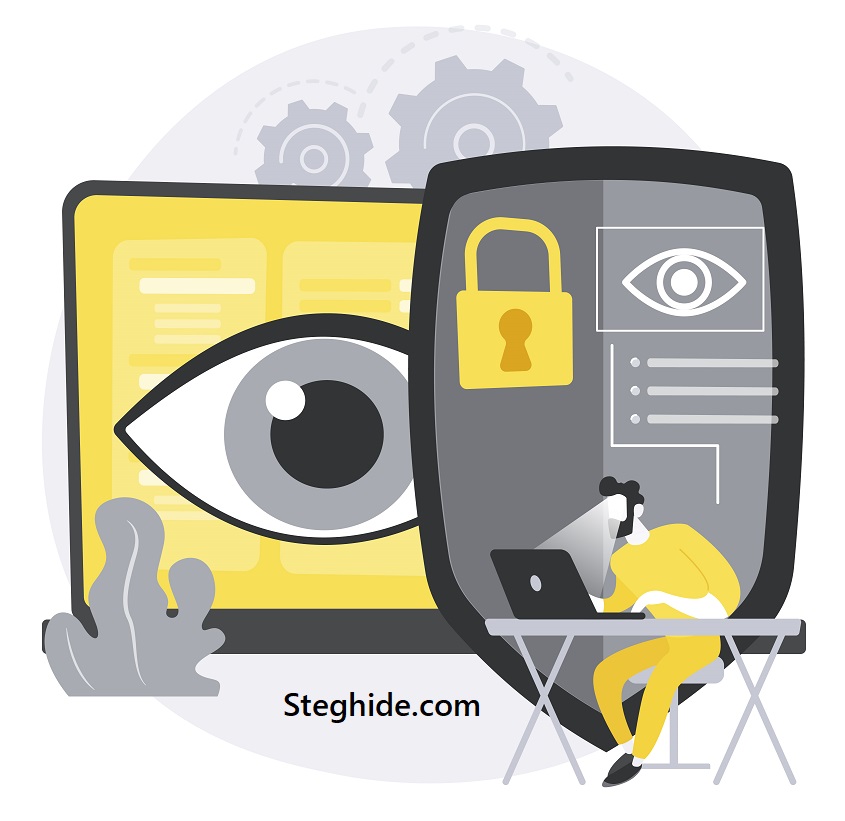Digital security continues evolving alongside technological advancements and growing cyber threats. As communication systems expand, methods for safeguarding information become increasingly complex. Traditional encryption plays a major role in protecting content, yet encrypted data itself often signals confidentiality, sometimes drawing unwanted attention. This challenge has pushed developers and researchers to explore discreet solutions that secure content while maintaining ordinary appearances.
Steganography provides such an approach by hiding information within seemingly harmless files. Among available tools, Steghide has become a notable solution due to its open-source design, cross-platform compatibility, and integrated encryption. Its ability to conceal information inside common carriers like images and audio files makes it highly effective for private communication and data protection.
Understanding Steghide requires examining how it functions in real-world contexts. Its use spans industries, research, education, and personal privacy. However, ethical dilemmas arise as the same tool enabling security can also enable malicious activity. Exploring these applications and concerns equips professionals, students, and individuals with a balanced view of its role in today’s digital landscape.
Real-World Use Cases in Cybersecurity
Secure Corporate Communication
Organizations leverage Steghide for secure exchanges across global networks. Hidden files protect trade secrets, strategic documents, and financial information from industrial espionage. Unlike plain encryption, concealed messages avoid triggering suspicion. Steghide’s combination of embedding and encryption ensures sensitive data remains private during transfers across insecure channels.
Protection of Intellectual Property
Steghide assists in preserving ownership of digital content. By embedding copyright information within carriers, creators secure proof of authorship. This method reinforces legal protection for designers, writers, and developers. Intellectual property embedded through steganography discourages plagiarism while maintaining file usability for everyday purposes.
Preventing Data Exfiltration
Companies employ Steghide to monitor and prevent unauthorized exfiltration attempts. Employees may attempt to leak confidential information using disguised files. Cybersecurity teams study Steghide’s mechanisms to develop detection tools. This awareness strengthens internal security policies and enhances readiness against insider threats.
Applications in Journalism and Activism
Whistleblowing and Transparency
Whistleblowers depend on secure communication channels to reveal corruption or misconduct. Steghide provides covert methods for transmitting evidence without alerting monitoring systems. Its ability to conceal documents or multimedia files within images or audio empowers whistleblowers to share critical information while reducing risk of exposure.
Activist Communication
Human rights activists often operate under regimes with strict surveillance measures. Steghide supports covert communication between groups, enabling activists to organize safely. By embedding instructions or contact details in benign carriers, movements continue coordinating despite oppressive monitoring practices.
Media Preservation
Journalists use Steghide for storing interviews, research notes, or unpublished material discreetly. This prevents leaks, censorship, or confiscation of sensitive work. Protecting raw data ensures freedom of expression and accurate reporting, especially in environments where independent journalism faces threats.
Research and Educational Value
Academic Studies
Universities utilize Steghide to introduce students to steganography principles. Courses in cybersecurity and digital forensics highlight practical applications, allowing learners to test embedding and extraction techniques. This hands-on training prepares students for careers addressing digital threats.
Algorithmic Development
Researchers explore Steghide as a foundation for developing new embedding algorithms. Its open-source structure supports experimentation, modification, and improvement. Studies focus on efficiency, imperceptibility, and resistance against steganalysis. Advancing these methods contributes to more robust information security.
Forensic Training
Steghide plays a significant role in digital forensic education. Students practice identifying and analyzing hidden data within files. Learning to detect misuse supports investigations into criminal activities. Such training strengthens law enforcement and prepares future experts to address evolving cybercrime tactics.
Everyday Personal Use
Private Data Protection
Individuals use Steghide to safeguard personal information such as identification documents, passwords, or private journals. Embedding sensitive data within ordinary files protects privacy without signaling encryption. This ensures that content remains secure even if devices are compromised.
Communication Privacy
Steghide enables discreet exchanges between friends or family members. Concealed messages inside shared media files maintain confidentiality. This form of private communication avoids attracting attention in digital platforms where monitoring may exist.
Backup and Storage
Steghide assists in storing personal data safely within media files. Backups disguised as harmless content avoid unnecessary scrutiny. Such storage methods protect valuable information from accidental exposure or unauthorized access.
Ethical Concerns Regarding Steghide
Misuse for Criminal Purposes
- Malware Distribution: Attackers may conceal malicious payloads inside images or audio carriers
- Illicit Communication: Criminals can exchange covert instructions without detection
- Data Smuggling: Hidden content facilitates unauthorized transfers across secure networks
These concerns highlight risks when steganography falls into the wrong hands. Security experts monitor such activities while developing detection tools.
Legal Implications
Use of Steghide introduces legal challenges. Laws surrounding steganography vary across regions. Misuse for illegal communication or data transfer can result in severe consequences. Organizations and individuals must remain aware of compliance requirements before deploying such tools.
Ethical Responsibility
While Steghide offers legitimate protection, users must exercise ethical responsibility. Balancing privacy with accountability prevents misuse. Promoting awareness and ethical guidelines ensures this tool strengthens cybersecurity instead of enabling harmful practices.
Comparison of Positive and Negative Impact
Benefits to Society
Steghide contributes positively by supporting privacy, research, and secure communication. Journalists, educators, and organizations leverage its capabilities to protect data and freedom of expression. Its availability as open-source software empowers communities to innovate and learn.
Risks of Misuse
Conversely, Steghide may empower cybercriminals if exploited irresponsibly. Concealed malware, terrorist communication, or illegal data distribution represent real threats. These negative outcomes underscore the need for monitoring, regulation, and responsible deployment.
Striking a Balance
Balancing benefits and risks requires collaboration between developers, security teams, and policymakers. Encouraging innovation while establishing ethical standards ensures Steghide’s potential remains beneficial. Striking this balance protects society while preserving freedom of communication.
Future Outlook for Steghide and Steganography
Advancing Detection Methods
Security researchers continue developing advanced steganalysis tools. These detection methods aim to identify hidden content within suspicious carriers. By improving accuracy and efficiency, they strengthen digital defenses against misuse.
Expanding Use in Security
Organizations will increasingly integrate steganography into layered defense strategies. Steghide’s combination of encryption and concealment positions it as a useful tool in evolving cybersecurity systems. Broader adoption supports proactive protection against espionage and surveillance.
Ethical Awareness
The future of Steghide depends on promoting ethical awareness. Training programs, policies, and educational initiatives guide responsible use. By encouraging ethical principles, society ensures steganography remains a force for protection rather than exploitation.
Conclusion
Steghide represents both opportunity and challenge in the digital era. Its ability to conceal data within ordinary files supports privacy, security, research, and free expression. However, ethical dilemmas emerge as misuse can empower criminal activity, data exfiltration, or illicit communication. Balancing these outcomes requires vigilance, regulation, and responsible application. Understanding real-world use cases and ethical concerns equips individuals and organizations with insight to harness Steghide constructively while safeguarding against potential misuse.



